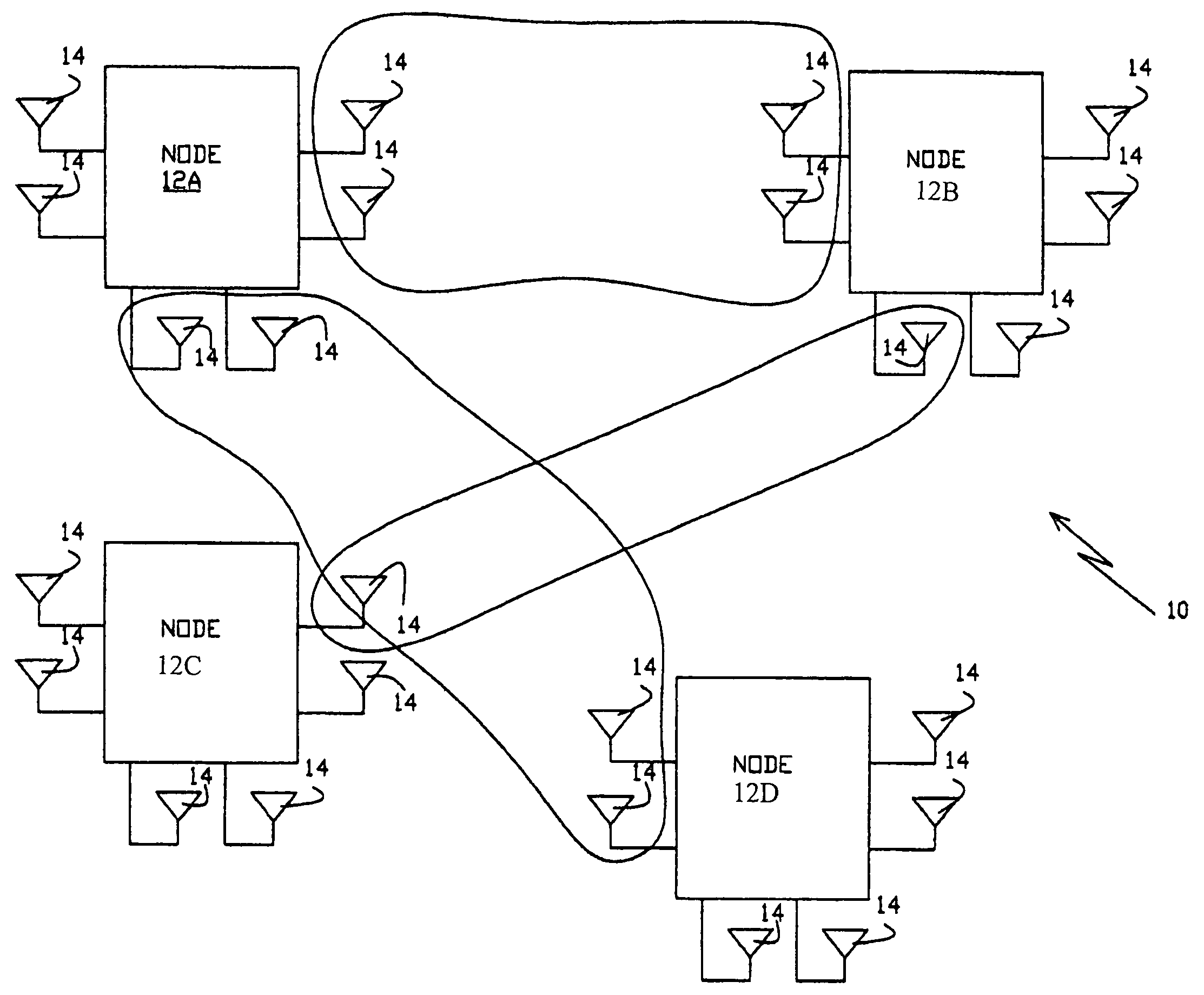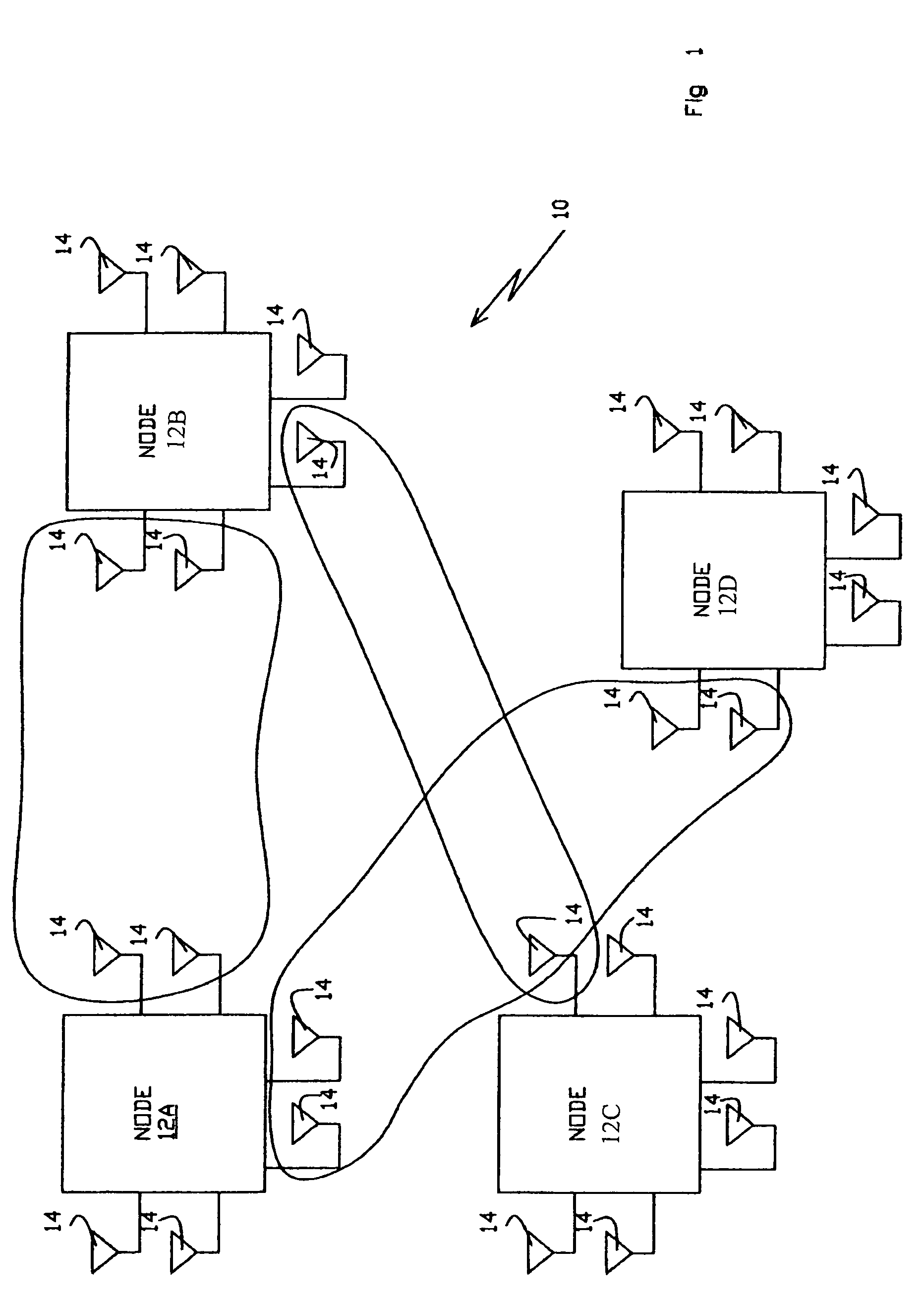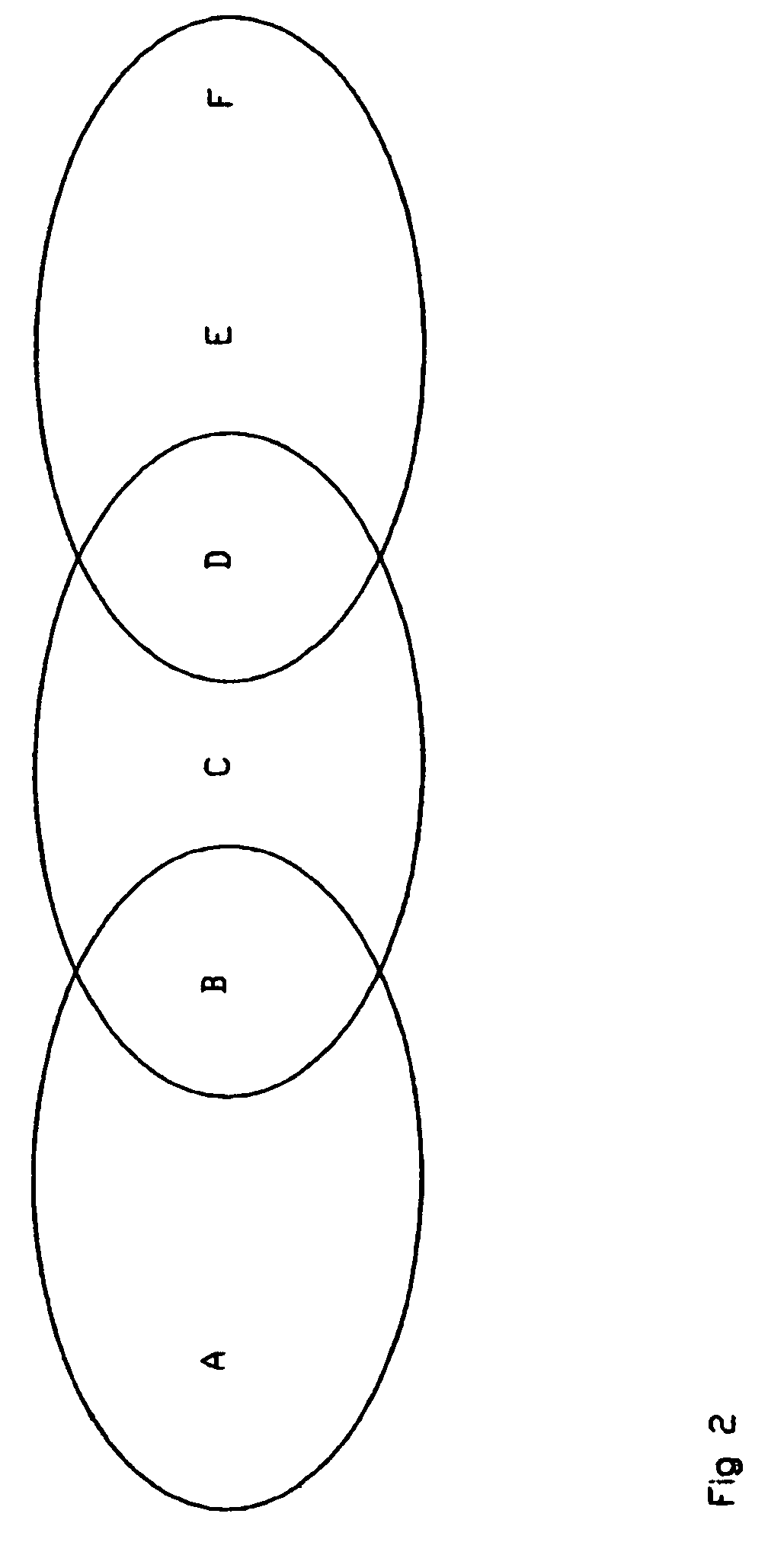Antenna division multiple access
a technology of multiple access and antenna, applied in the field of wireless networks, can solve the problems of serious impairment, inefficiency, and inability to devote an entire time slot to a short message, and achieve the effects of suppressing interference, enhancing spatial demultiplexing capability, and less correlation
- Summary
- Abstract
- Description
- Claims
- Application Information
AI Technical Summary
Benefits of technology
Problems solved by technology
Method used
Image
Examples
Embodiment Construction
[0031]The present invention is of a wireless communication method that exploits MIMO to obtain high spectral efficiency even for short messages. Specifically, the present invention can be used to operate an ad hoc wireless network.
[0032]The principles and operation of wireless communication according to the present invention may be better understood with reference to the drawings and the accompanying description.
[0033]Although the preferred embodiment of the present invention uses VBLAST processing at receiving nodes, the scope of the present invention includes any suitable processing method for extracting superposed messages from a common narrow-bandwidth signal.
[0034]To implement the present invention, three challenges must be overcome.
[0035]The first challenge is that multiple requests to send should be detected simultaneously, and antenna-sharing decisions should be managed in a distributed fashion. The present invention provides a MAC layer protocol to handle this.
[0036]The sec...
PUM
 Login to View More
Login to View More Abstract
Description
Claims
Application Information
 Login to View More
Login to View More - R&D
- Intellectual Property
- Life Sciences
- Materials
- Tech Scout
- Unparalleled Data Quality
- Higher Quality Content
- 60% Fewer Hallucinations
Browse by: Latest US Patents, China's latest patents, Technical Efficacy Thesaurus, Application Domain, Technology Topic, Popular Technical Reports.
© 2025 PatSnap. All rights reserved.Legal|Privacy policy|Modern Slavery Act Transparency Statement|Sitemap|About US| Contact US: help@patsnap.com



